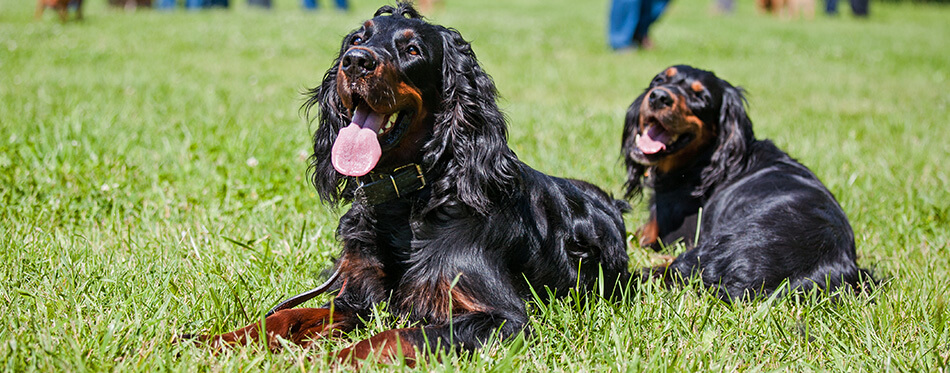In the summer months, our dogs can give us plenty of reasons to be concerned. Dogs tend to pant when they’re exercising or when it’s hot, so we know to look out for excessive panting as a sign of dehydration and heat exhaustion. But the question is, can dogs get heat rash?
Dog’s skin is sensitive and heat rash can be difficult to identify under all their fur, but we’re here to help you figure out what’s a heat rash and what might be dog skin allergies.
Do Dogs Get Heat Rash?
Dogs can get heat rash, just like humans can. Heat rash is more likely to occur in the folds of their skin where the flesh can become extremely overheated and sweaty. When this area rubs together in this condition, it causes heat rash.
How Does Heat Rash Occur?
A heat rash occurs when the body overheats. The rash is often itchy, can be uncomfortable, and will appear to be a patch of red, slightly raised skin. The little bumps that are created have the potential to become infected if the heat rash is severe and left untreated.
Alternatively, a dog’s belly rash may present in dogs with sensitive skin. Dogs prone to skin allergies and skin irritation are likely to suffer from heat rashes, even though they have no skin folds or wrinkles.

What Does a Dog Heat Rash Look Like?
A skin rash caused by heat may look dissimilar to a human’s heat rash on a dog’s skin. Depending on its thickness, their fur can prevent you from finding and identifying heat rash right away. It also doesn’t help that heat rash, on any being, can appear to look the same as a bunch of other skin conditions.
Heat-related skin rashes will present as a red rash with tender skin. There may be sores, irritation, scabs from broken sores, lumps, and pimpled skin in the area affected.
Any of the following symptoms can be attributed to a dog’s heat rash:
Symptom list
- Red skin
- Lumps and pimples
- Broken sores
- Weeping sores
- Itching
- Scratching
- Biting at the affected area
What else could the rash be?
The rash on your dog could also belong to flea allergy dermatitis, dust mites, skin infections, a reaction from poison ivy, fungal infections, and more. Foul-smelling boils are a sign that something serious is going on, and you need to take your dog to the vet immediately.
What Can I Give My Dog for Heat Rash?
After suspecting or identifying a heat rash on your dog, the best course of action is to take them to the vet that you’re registered with. If that practice is closed at the time you discover irritated skin, it’s fine to take your dog to any other local vet, but your own vet will have your dog’s health files.
Your dog will likely be prescribed a cream or gel to treat heat rash. This will ease any related symptoms, including small pimples. Dog heat rash treatment is really no different from human heat rash treatment.
What To Do When Your Vet is Closed
If there are no vets available, it’s important that you keep your dog and their heat-related rash cool and dry. You can put a cool, damp cloth over the itchy red bumps that will be causing your dog discomfort, and that should hopefully stop them from trying to scratch at it. Avoid excess heat and areas where the air temperature is high.
Remember that temperature rises, so keep your dog on the ground floor of your home and treat the affected area there until you can get to a vet.
Can My Dog Get Hives From the Heat?
Dogs can get hives when it’s hot and humid out. Hives and heat bumps on dogs look very similar, which is another reason it’s so vital that you visit a vet following the initial development of a rash on the skin of your dog.
The hot spots on your dog are more likely to be a heat rash, but hives can be caused by your dog simply getting too hot and a bit sweaty.
Hives will present with several more symptoms than a regular heat rash. Your dog’s face may swell up, they may have no appetite or appear lethargic. Hives also present with raised, red bumps on the dog’s skin, especially around the face, ears, and tongue.
Hives can also be a direct result of environmental allergies in dogs. This type of skin issue can even develop from contact dermatitis.
Can Dog Rash Spread to Humans?
A dog’s heat rash should not spread to a human. The only reason a human may start presenting illness after being in contact with a dog that has a rash would be because the rash had open sores full of bacteria.
That bacteria could then get into any open cuts on the human, or they could rub their eyes/face after touching the dog. It’s crucial that a human handling a dog with an infection or a skin affliction of any type immediately washes their hands and does not, under any circumstances, touch their face while with the dog.
Staph Infections
Bacterial infections can be passed from dog to human in seconds.
The most common infection found is Staphylococcus. Staph infections can be fatal, but here’s the interesting thing: Dogs and cats carry Staphylococcus as standard on their skin, which means it’s present all the time. The infection can be fatal for a human if the human is sensitive (has a weak immune system or the like) or there are complications.
Remember to wash your hands and don’t rub your eyes or mouth.

How to Avoid a Heat Rash on Your Dog’s Skin
There are a few ways to avoid a rash in your pup. Be sure to keep them out of high temperatures, especially if they are a dog with wrinkles, skin folds, or over-sensitive skin. Your furry friend is just as sensitive to the heat as you, if not, more so. Bodies overheat in high temperatures.
Trips Outside
When you’re out and about, it may feel like there isn’t anything you can do to keep your dog cool (other than having a bottle of water and a water bowl at the ready), but we assure you that there is. Visit areas where you know there are water fountains for dogs or use a cooling vest to keep your dog’s temperature down on hot days.
At Home
At home, you can use fans, cooling pads, and put small amounts of ice in your dog’s water. You should also have towels at the ready for your dog to rest on; these will absorb any sweat on their skin and keep them from developing a rash.
You should carry a type of hydrocortisone cream for your dog if they are prone to heat rashes. This is the same type of cream that your vet is likely to give you if you come in with a dog that has a heat rash. It’s good to have a doggy first aid kit when you have a dog with large wrinkles or dogs prone to seasonal allergies that then cause rashes.

